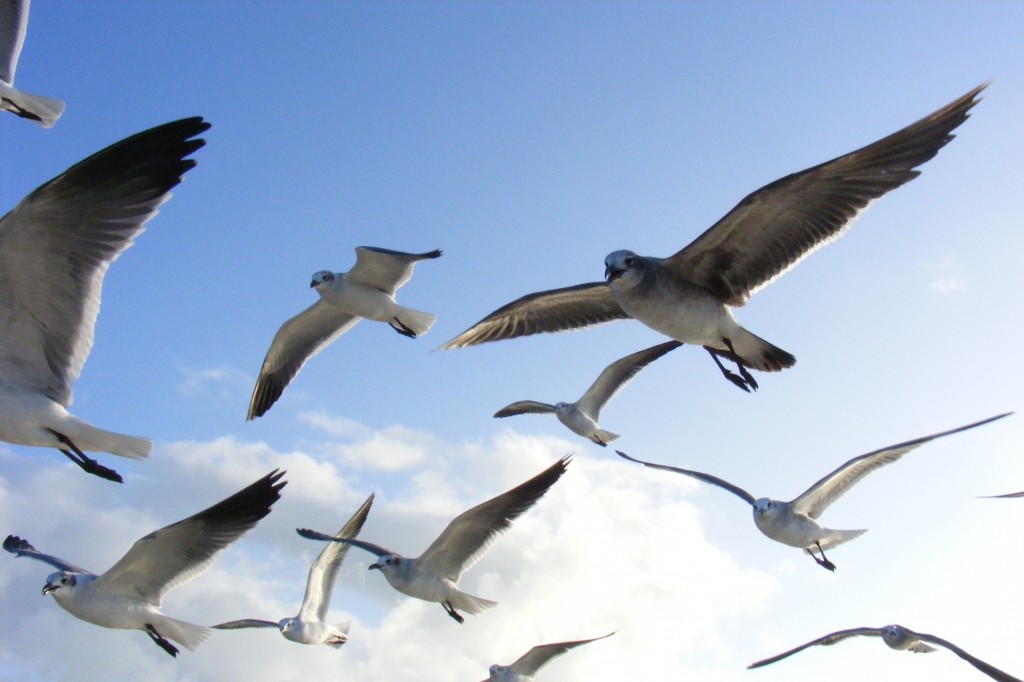It’s been a few years since we had a weekly birds news roundup that compiles recent articles around the web about birds. Here are the top stories about birds this week.
Birds founds with melted feathers near solar towers in Coachella

This story, which broke on Nov. 9 by The Desert Sun, has been all over the news the past week. It’s a horribly depressing story, but it’s something we shouldn’t ignore. Dozens of dead birds have been found near these huge solar projects, which include large towers and a field of reflecting mirrors, with a number of birds showing tinged wings.
Here’s more from energy reporter K Kaufmann:
Trying to estimate how many birds could be injured or killed at large-scale solar projects, and what might be done to prevent mortalities — has become a pressing concern for solar developers and environmental agencies as these projects multiply across California.
Of the 34 birds reported dead or injured at Ivanpah in September, 15 had melted feathers. Dozens of other bird carcasses, not singed but with critical injuries, have been found in recent months at two solar projects about to go online on public land between Joshua Tree National Park and Blythe, a town of 20,800 on Interstate 10 near the Arizona border.
While experts have said this could be a big problem, it also might not be. Here’s more from the article:
At the same time, both McKernan and Garrett said the bird deaths at solar projects need to be seen in the larger context of mortality rates for migratory birds in general, which are already high from natural, as well as man-made causes. Millions of birds die yearly flying into windows and buildings, they said.
“A few golden eagles killed by wind turbines is significant — they are large, long-lived birds that don’t have high reproduction rates — whereas a dozen mallards or ruddy ducks probably on a population level is pretty insignificant,” Garrett said.
I’m a huge supporter of alternative energies, but they’re more complicated than most might imagine. Their environmental impacts need to be studied much more. Just as with wind turbines, I’m sure we’ll hear more about this in the coming months and years. In the meantime, read the rest of the article, it’s really well reported.
Dump in California using birds to fend off birds

A dump in Brea, CA, has declared war against the hordes of swooping gulls and pigeons that make it difficult for workers to operate heavy machinery. Instead of getting a scarecrow or using loud air guns to ward them off, the dump has hired a falconer to chase away birds.
For-profit falconry is a growing business because it uses birds of prey to abate other birds without trapping or killing any.
Here’s more from the article in the Washington Post:
Companies from California to Texas promise a no-kill, natural solution to cities bedeviled by bird droppings, wineries plagued by grape-snatchers and landfills harassed by gulls that can carry rotten bits of refuse miles from the dump before dropping them in suburban yards.
“It’s exploding. I’ve had to turn away a lot of work, and it’s only because I have so many people in line,” said falconer Jeff Cattoor, who started BlackJack Bird Abatement in Ft. Worth, Texas, and has seen his business double each year.
He advertises an approach that allows businesses to clean up their properties without using poison. “The most important thing we’ve accomplished here is giving people an option to do something that isn’t a ‘scorched earth’ approach,” he said.
This is something we’ve seen before, such as Wimbledon using a Harris Hawk to scare away pigeons, and something we’ll undoubtedly see again.
Enter your best photos to Project FeederWatch to win various prizes
Project FeederWatch is currently underway and the Cornell Lab and Bird Studies Canada in conjunction with Bob’s Red Mill has brought back the BirdSpotter photo contest. Every week, FeederWatch participants have the chance to win a prize by entering their best photo that fits the challenge. Click here to learn more about it.


